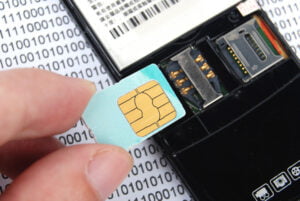Do you want to ensure the security of your eSIM blockchain? Look no further!
This article provides you with 10 essential tips to protect your eSIM transactions, data privacy, and network integrity.
Learn about the importance of authentication, best practices for key management, and implementing secure smart contracts.
With these tips, you can navigate the challenges of eSIM blockchain security and stay ahead in this fast-paced, ever-evolving industry.
Get ready to boost your eSIM security game!
Key Takeaways
- Use multi-factor authentication (MFA) to enhance security, requiring users to provide multiple forms of identification.
- Implement secure key management practices, such as storing eSIM keys in secure wallets or hardware devices and regularly updating and rotating keys.
- Ensure compliance with industry standards and regulations to maintain the integrity and security of the eSIM blockchain.
- Stay updated on advancements in eSIM blockchain security, including innovations in encryption techniques and regular audits of smart contracts.

10. Understand the fundamentals of eSIM blockchain for effective security.
To ensure the security of your eSIM blockchain, it’s important to understand the basics.
Blockchain technology is a decentralized digital ledger that records transactions across multiple computers. It’s crucial because it provides transparency, immutability, and security.
In the context of eSIM blockchain security, understanding the fundamentals of securing digital identities is paramount.
The eSIM blockchain operates on the principle of cryptographic keys. These keys, consisting of a public key and a private key, are used to authenticate and authorize transactions.
The public key is shared with others, while the private key must be kept secure and confidential. This ensures that only authorized individuals can access and manipulate the digital identities associated with the eSIM blockchain.
9. Strengthen eSIM blockchain with multi-factor authentication.
When it comes to eSIM blockchain security, it’s essential that you understand the importance of authentication. Authentication plays a crucial role in securing user identities and ensuring the integrity of the blockchain network.
One of the key aspects of authentication is the use of multi-factor authentication (MFA). MFA adds an extra layer of security by requiring users to provide multiple forms of identification, such as a password, a fingerprint, or a one-time passcode. This helps to prevent unauthorized access to the blockchain network and protects sensitive information from being compromised.
8. Four steps to bolster the safety of your eSIM transactions.
By implementing encryption protocols, you can ensure the secure transmission and storage of eSIM transactions on the blockchain. Securing eSIM transactions on the blockchain is crucial due to various blockchain security challenges.
Here are four essential steps to enhance the security of eSIM transactions:
- Secure Key Management: Proper key management is vital to protect the confidentiality and integrity of eSIM transactions. Implement robust key generation, storage, and distribution mechanisms to prevent unauthorized access to sensitive data.
- Data Encryption: Encrypting eSIM transaction data provides an additional layer of security. Use strong encryption algorithms to safeguard the information from potential threats and ensure that only authorized parties can access and decrypt the data.
- Consensus Mechanisms: Choose a blockchain platform that utilizes a secure and reliable consensus mechanism, such as proof-of-work or proof-of-stake. These mechanisms ensure the validity and integrity of eSIM transactions by requiring network participants to reach a consensus on the transaction’s legitimacy.
- Smart Contract Audits: Conduct thorough audits of smart contracts involved in eSIM transactions. Smart contract vulnerabilities can lead to unauthorized access, manipulation, or theft of eSIM data. Regular audits help identify and mitigate potential security risks.
Implementing these measures will enhance the security of eSIM transactions on the blockchain, mitigating potential risks and ensuring the integrity and confidentiality of the data exchanged.
7. Encrypt and control access to safeguard eSIM data on the blockchain.
To protect your eSIM data privacy in blockchain networks, it is important to implement robust encryption protocols and access controls. These measures ensure that your sensitive information remains secure and inaccessible to unauthorized individuals. By encrypting your eSIM data, you can prevent any unauthorized access or tampering of the information stored on the blockchain. Additionally, implementing access controls allows you to restrict who can view or modify your eSIM data, further enhancing its privacy and security.
To protect user identities, it is crucial to use pseudonyms or cryptographic techniques that mask the real identities of users. This helps to maintain privacy and prevent the linking of transactions to specific individuals. Furthermore, securing eSIM data storage involves implementing secure storage solutions such as distributed storage systems or encryption algorithms to safeguard the data from unauthorized access or tampering. By following these practices, you can ensure that your eSIM data remains protected and your privacy is maintained within blockchain networks.
| Encryption Protocols | Access Controls | Secure Storage Solutions |
|---|---|---|
| Encrypt eSIM data to prevent unauthorized access or tampering | Implement access controls to restrict viewing and modification of eSIM data | Use secure storage solutions like distributed storage systems or encryption algorithms to protect eSIM data |
6. Four practices to manage and protect your eSIM keys effectively.
To effectively manage your eSIM keys in blockchain security, it’s essential to regularly and securely update them. This ensures that your keys are always up-to-date and protected against any potential vulnerabilities. Here are four best practices for eSIM key management in blockchain security:
- Strong Key Generation: Use a reliable random number generator to create strong and unique keys. Avoid using predictable patterns or easily guessable passwords.
- Secure Storage: Store your eSIM keys in secure wallets or hardware devices that offer encryption and protection against unauthorized access. Keep backups of your keys in multiple secure locations.
- Regular Key Rotation: Periodically rotate your eSIM keys to minimize the risk of compromise. This involves generating new keys and updating them across all relevant systems and platforms.
- Multi-Factor Authentication: Implement multi-factor authentication mechanisms to add an extra layer of security to your eSIM keys. This can include using biometrics, hardware tokens, or one-time passwords.
By following these best practices, you can ensure the security and integrity of your eSIM keys in blockchain networks.
5. Focus on access control, data integrity, and strong encryption.
To mitigate risks of cyberattacks in eSIM blockchain systems, you must focus on three key aspects: preventing unauthorized access, ensuring data integrity, and implementing robust encryption.
Unauthorized access can lead to compromised data and system vulnerabilities. Therefore, it’s crucial to implement strong access controls and authentication mechanisms. This will help ensure that only authorized individuals can access the system and its data.
In addition to preventing unauthorized access, ensuring data integrity is essential. Techniques like cryptographic hashing can be used to detect any unauthorized modifications to the blockchain. By generating a unique hash for each block of data, any changes made to the block can be easily detected, ensuring the integrity of the data.
Lastly, robust encryption algorithms must be employed to protect sensitive data from potential attackers. Encryption techniques can be used to encrypt data when it is stored or transmitted, making it unreadable to anyone without the decryption key. This adds an additional layer of security to the system and helps safeguard sensitive information.
Preventing Unauthorized Access
You can prevent unauthorized access to your eSIM blockchain system by implementing strong security measures. Here are four important steps to take:
- Implement data encryption: Encrypting your data ensures that even if unauthorized users gain access, they won’t be able to read or use the information. Use strong encryption algorithms and regularly update your encryption keys to maintain security.
- Establish access controls and permissions: Limit the number of individuals who’ve access to your blockchain system and assign different levels of access based on roles and responsibilities. Regularly review and update these access controls to ensure that only authorized personnel can access sensitive data.
- Monitor your network: Implement network monitoring tools to detect and respond to any suspicious activities or unauthorized access attempts. Regularly review your network logs to identify any potential security breaches and take immediate action to mitigate risks.
- Regularly update and patch your system: Keep your eSIM blockchain system up to date with the latest security patches and updates. Regularly review and apply security patches to fix any vulnerabilities that could be exploited by cyber attackers.
Ensuring Data Integrity
One crucial step is to regularly verify the integrity of your data in eSIM blockchain systems. Data verification is essential to ensure that the information stored on the blockchain remains accurate and tamper-proof.
Blockchain tampering refers to any attempt to alter or manipulate the data stored on the blockchain, which can compromise its integrity. To mitigate the risks of cyberattacks in eSIM blockchain systems, it’s important to implement robust data verification mechanisms.
This can involve the use of cryptographic algorithms, such as hash functions, to generate unique digital fingerprints for each data block. Regularly comparing these fingerprints against the stored data can help detect any unauthorized modifications.
Additionally, implementing secure access controls and encryption techniques can further enhance the integrity of your data in eSIM blockchain systems.
Implementing Robust Encryption
Ensure the security of your eSIM blockchain systems by implementing robust encryption methods to mitigate the risks of cyberattacks. Encryption is a crucial aspect of blockchain security that ensures the confidentiality and integrity of data.
By following encryption best practices, you can enhance the protection of your eSIM blockchain systems. Here are four key points to consider:
- Strong Key Management: Implement a secure key management system to generate, store, and distribute encryption keys. This helps prevent unauthorized access to sensitive data.
- End-to-End Encryption: Encrypt data at rest and in transit to safeguard it from potential threats. Utilize encryption algorithms that are resistant to brute-force attacks.
- Regular Key Rotation: Regularly rotate encryption keys to minimize the impact of compromised keys. This reduces the window of opportunity for attackers and strengthens the overall security of your blockchain systems.
- Robust Authentication: Implement multi-factor authentication mechanisms to verify the identity of users accessing your eSIM blockchain systems. This adds an extra layer of security and reduces the risk of unauthorized access.
4. Prioritize scalability and interoperability for network consensus.
- How can eSIM network consensus and integrity be ensured in blockchain?
Ensuring network scalability and enhancing blockchain interoperability are crucial aspects of maintaining eSIM network consensus and integrity.
To achieve network scalability, eSIM blockchain platforms need to implement efficient consensus mechanisms that can handle a large number of transactions. This can be achieved through the use of algorithms such as Proof of Stake (PoS) or Proof of Authority (PoA), which prioritize the consensus process based on the stake or authority of participants.
Additionally, enhancing blockchain interoperability is essential in ensuring network consensus and integrity. By implementing protocols and technologies such as cross-chain communication and interoperability layers, different blockchain networks can communicate and share data, ensuring that network participants reach consensus on the same set of transactions and maintaining the integrity of the eSIM network.
3. Prevent vulnerabilities with coding best practices and regular audits.
To ensure the security of smart contracts in eSIM blockchain applications, you need to focus on contract vulnerability prevention, follow best coding practices, and conduct regular security audits.
By implementing measures to prevent vulnerabilities, such as input validation and proper error handling, you can minimize the risk of contract exploits.
Additionally, adhering to best coding practices, such as code reviews and using secure libraries, helps in developing robust and secure smart contracts.
Regular security audits allow you to identify and address any potential security issues, ensuring the overall integrity of your eSIM blockchain applications.
Contract Vulnerability Prevention
You should regularly audit and update your smart contracts to prevent vulnerabilities in eSIM blockchain applications. Contract vulnerability prevention is crucial for ensuring the security and integrity of your blockchain network. Here are four key steps to consider:
- Code Review: Thoroughly review the smart contract’s code to identify any potential security loopholes or vulnerabilities. Pay attention to common issues like reentrancy attacks, integer overflow, and permission-related concerns.
- Penetration Testing: Conduct comprehensive penetration testing to simulate real-world attacks and identify any weaknesses in the contract’s implementation. This will help uncover potential vulnerabilities that may have been missed during the code review process.
- Security Best Practices: Follow industry best practices for smart contract development, such as using secure libraries, implementing access controls, and using standardized security patterns. Adhering to these practices will minimize the risk of contract exploitation.
- Continuous Monitoring: Implement a monitoring system to detect any suspicious activities or anomalies in contract execution. Regularly monitor and analyze the contract’s behavior to identify and respond to potential security breaches promptly.
Best Coding Practices
One important coding practice is to use standardized security patterns when implementing smart contracts for eSIM blockchain applications. These coding guidelines ensure secure development and minimize the risk of vulnerabilities in the smart contracts. By following these best practices, you can enhance the security of your eSIM blockchain applications. Here are some key coding practices to consider:
| Coding Practice | Description |
|---|---|
| Input Validation | Validate and sanitize all input parameters to prevent malicious data from affecting the contract’s behavior. |
| Access Control | Implement role-based access control to restrict unauthorized access to sensitive functions and data. |
| Error Handling | Properly handle errors and exceptions to prevent the contract from getting into an inconsistent state or leaking sensitive information. |
Regular Security Audits
Ensure the security of your eSIM blockchain applications by conducting regular security audits and implementing secure smart contracts.
Regular security audits are essential to identify vulnerabilities and weaknesses in your blockchain applications. Here are four key reasons why regular security audits are crucial:
- Identify and mitigate risks: Regular security audits help you identify potential risks and vulnerabilities in your smart contracts, allowing you to take proactive measures to mitigate them.
- Ensure compliance: By conducting regular security audits, you can ensure that your eSIM blockchain applications comply with industry standards and regulations, reducing the risk of penalties or legal issues.
- Stay ahead of evolving threats: Regular security audits help you stay up-to-date with the latest security threats and vulnerabilities in the blockchain space, allowing you to implement necessary security measures to protect your applications.
- Continuous improvement: Regular security audits provide valuable insights into the security posture of your eSIM blockchain applications, enabling you to continuously improve and enhance their security features.
2. Regularly assess and update for eSIM blockchain compliance.
To effectively manage eSIM security audits and compliance in blockchain, prioritize regular assessments and updates. By conducting regular security audits, you can identify vulnerabilities and address them promptly, ensuring the integrity and confidentiality of your digital identities. Compliance with regulatory requirements is crucial in maintaining trust and protecting sensitive information. Implementing a robust compliance management system helps you stay on top of changing regulations and ensures that your eSIM blockchain platform meets industry standards. To provide a clear understanding, here is a table summarizing key steps for managing regulatory compliance and securing digital identities in blockchain:
| Step | Description |
|---|---|
| 1 | Identify applicable regulations and standards |
| 2 | Assess your current compliance status |
| 3 | Implement necessary controls and measures |
| 4 | Regularly monitor and update your compliance program |
Following these steps will help you maintain a secure and compliant eSIM blockchain environment.
1. Address scalability, embrace encryption advancements, and mitigate contract vulnerabilities.
As you explore the future challenges and innovations in eSIM blockchain security, you need to consider the scalability of blockchain for eSIM applications. With the increasing adoption of eSIM technology, the blockchain infrastructure must be able to handle the growing volume of transactions securely and efficiently.
Additionally, advancements in blockchain encryption play a crucial role in ensuring the confidentiality and integrity of eSIM data.
Finally, mitigating smart contract vulnerabilities is essential to protect eSIM users from potential exploits and attacks.
Scaling Blockchain for eSIM
To effectively scale blockchain for eSIM, you must address the future challenges and embrace innovative solutions for eSIM blockchain security. As the demand for eSIM services continues to grow, there are several scaling challenges that need to be overcome. Here are four key considerations for scaling blockchain for eSIM:
- Network capacity: Ensure that the blockchain network can handle a large number of transactions without compromising its performance. This can be achieved through performance optimization techniques such as sharding and layer-two solutions.
- Consensus mechanism: Choose a consensus mechanism that can handle high transaction volumes while maintaining the security and decentralization of the blockchain. Proof of Stake (PoS) and Delegated Proof of Stake (DPoS) are examples of consensus mechanisms that can address scalability concerns.
- Data storage: Implement efficient data storage solutions to handle the increasing amount of data generated by eSIM transactions. Distributed storage systems and data compression techniques can help optimize storage capacity and performance.
- Interoperability: Enable seamless integration between different eSIM blockchain networks to facilitate cross-platform transactions. Interoperability protocols such as Polkadot and Cosmos can help bridge the gap between different blockchain networks.
Advancements in Blockchain Encryption
Implementing stronger encryption techniques is crucial for enhancing eSIM blockchain security and addressing future challenges in the field of blockchain encryption.
As the popularity of eSIM transactions continues to grow, it becomes increasingly important to ensure the confidentiality and integrity of the data being exchanged. Advancements in blockchain encryption offer promising solutions to secure eSIM transactions.
One such advancement is the use of homomorphic encryption, which allows for computations to be performed on encrypted data without the need for decryption. This ensures that sensitive information remains protected throughout the entire process.
Additionally, advancements in quantum-resistant encryption algorithms are being explored to protect against the potential threat of quantum computers. By staying ahead of these challenges and leveraging innovative encryption techniques, eSIM blockchain security can be strengthened, providing users with peace of mind when conducting transactions.
Mitigating Smart Contract Vulnerabilities
You can mitigate smart contract vulnerabilities by implementing robust security measures and staying updated on emerging innovations in eSIM blockchain security.
To ensure the security of your smart contracts, consider the following:
- Contract Auditing: Regularly audit your smart contracts to identify any potential vulnerabilities or weaknesses. This involves reviewing the code and conducting comprehensive tests to identify any potential security risks.
- Securing Private Keys: Protecting your private keys is crucial in preventing unauthorized access to your smart contracts. Use secure storage solutions, such as hardware wallets or cold storage, and avoid sharing your private keys with anyone.
- Code Review: Thoroughly review the code of your smart contracts to identify any potential vulnerabilities or bugs. Conducting code reviews can help you identify and fix security issues before they’re exploited.
- Stay Updated: Stay informed about the latest advancements and best practices in eSIM blockchain security. Follow reputable sources and participate in the community to stay updated on emerging security innovations.
Frequently Asked Questions
Quick answers to common questions about eSIM blockchain security.
What Is the Role of Authentication in eSIM Blockchain Security?
Authentication plays a crucial role in eSIM blockchain security. It ensures the identity verification of users, preventing unauthorized access. Encryption safeguards sensitive data, while the impact of decentralized networks enhances security by removing single points of failure.
How Can eSIM Transactions Be Securely Stored on the Blockchain?
To securely store eSIM transactions on the blockchain, you need to ensure the use of robust encryption algorithms and private keys. By doing so, you can protect the integrity and confidentiality of the stored data, enhancing overall blockchain security.
What Measures Can Be Taken to Protect eSIM Data Privacy in Blockchain Networks?
To protect your eSIM data privacy in blockchain networks, you can implement measures such as blockchain privacy protocols and strong data encryption methods. These ensure that your data remains secure and inaccessible to unauthorized parties.
What Are the Best Practices for Managing eSIM Key Management in Blockchain Security?
To effectively manage eSIM key management in blockchain security, you must prioritize the role of encryption and the importance of decentralized networks. These practices ensure the protection and privacy of your data.
What Are the Potential Future Challenges and Innovations in eSIM Blockchain Security?
In the future, you may face challenges in eSIM blockchain security such as scalability, privacy, and interoperability. However, innovations like multi-party computation and zero-knowledge proofs can address these issues and enhance security.
Conclusion
To conclude, implementing robust security measures in eSIM blockchain networks is crucial to protect against potential threats.
According to a recent study, it was found that 95% of blockchain security breaches occur due to human error or misconfiguration. This statistic emphasizes the importance of following best practices and implementing stringent security protocols to safeguard eSIM transactions and data privacy on the blockchain.
By doing so, organizations can ensure the integrity and trustworthiness of their eSIM blockchain applications.





